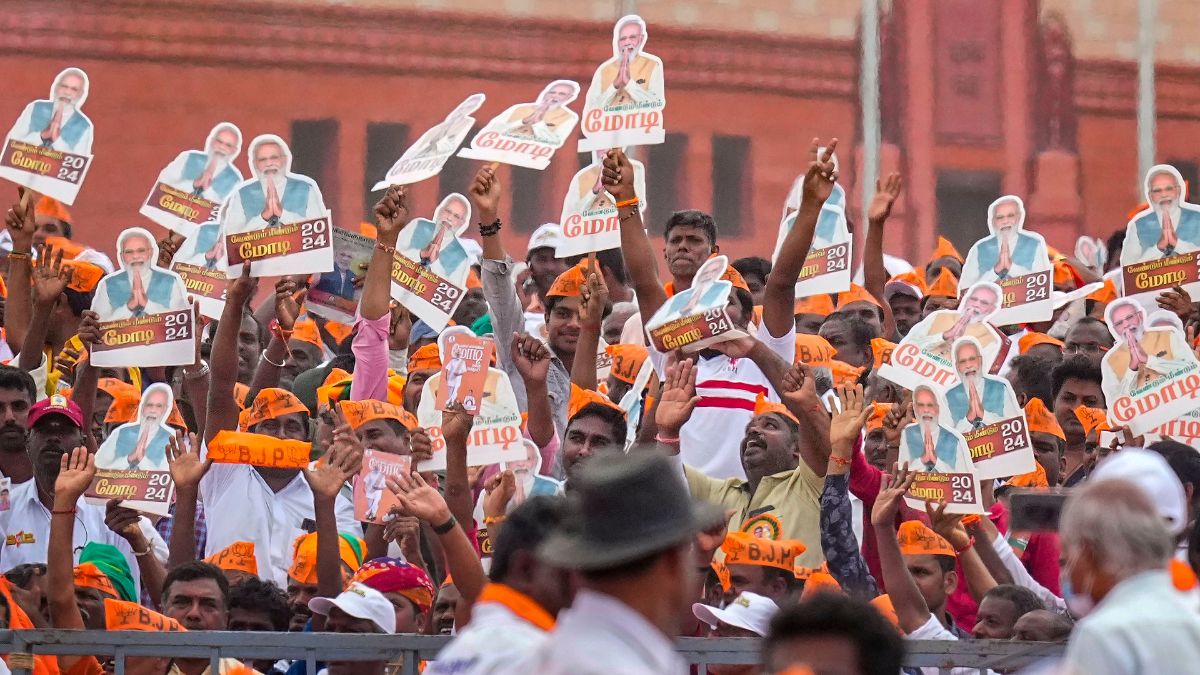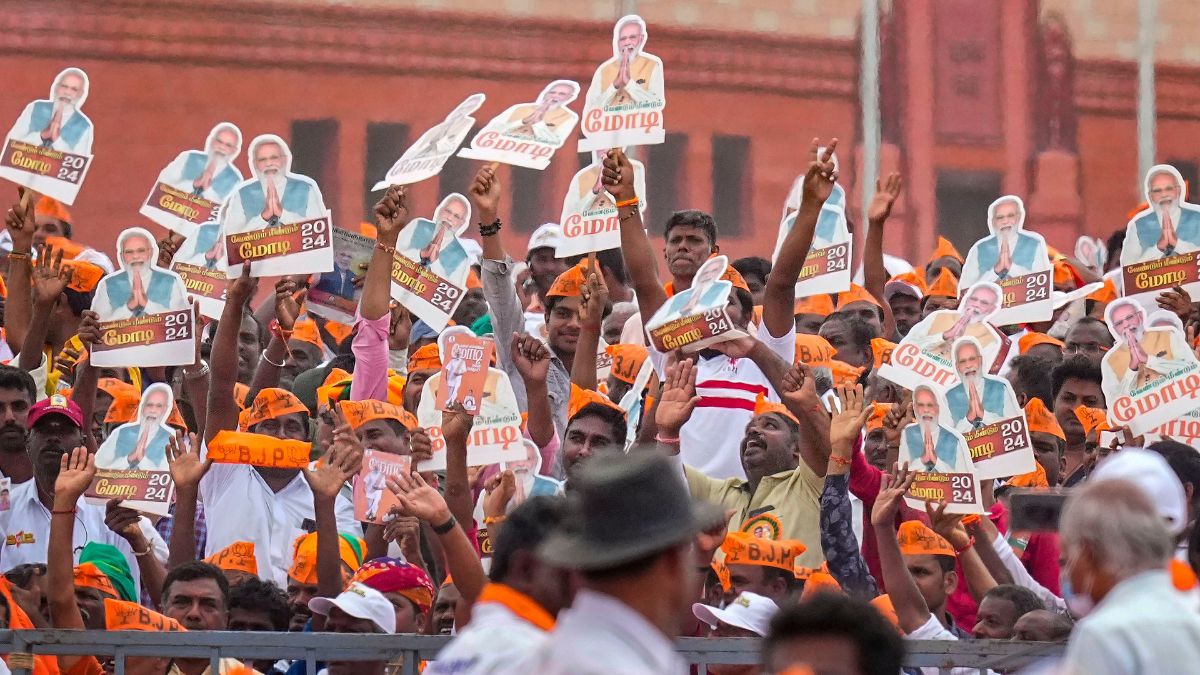When we were young, we were taught to first confirm before saying something — whether it was kind, true or necessary. For some reason, this is the thought that came to mind when reading about a recent study by Pew Research Centre that is widely being quoted and circulated in newspaper and website write-ups, both within and outside India.
The finding by the Pew Research Centre is that Hindus are the least educated religious group in the world and that 41 percent Hindus have no formal education whatsoever. That these findings have been accepted eagerly and are being publicised verbatim is surprising. One would have thought that anyone with an innate sense of secular decency would refrain from being the cause of humiliation to an entire religion in this manner. Unless of course, the truth in this is established beyond doubt and can be used to improve the situation. Let us analyse the Pew Findings in this context.
On the kindness parameter, the published articles are overtly and unapologetically unkind. They insinuate extreme backwardness in the religion, both in terms of absolute statistics and also highlighting gender gaps.
What about the “true” aspect? The Pew Study says it based its study on surveys in 151 countries. Surely they must have a reason to say so. One is not equipped to do a similar study to confirm the situation, but perhaps certain facts and statistics are in order here to reconcile the findings as well as to dispel the disillusionment and despair that they would have caused or reinforced.
Since the Survey states that most Hindus (94 percent) live in India, we restrict our analysis to India.
First, to say that Hindus are the least educated and that 41 percent of them have no formal education is a difficult conclusion to arrive at given that there are no exclusive Hindu schools. Admissions to schools in India is secular — with there being no segregation on the basis of religion — both in rural and urban areas. Data is also, thus, not available religion-wise. One wonders, therefore, about the nature of the sample in the survey and its size.
Next, a quick glance at some statistics available on the website of Indian Ministry of Human Resource Development’s reveal the following: The gross enrolment ratio (the number of children enrolled in schools divided by the number of children of the corresponding school enrolment age) at the elementary level (6-13 years) stands at 96.9 in 2014-15, compared to 81.6 in 2000-01 and 67.5 in 1980-81.
The number of recognised educational institutions has doubled in the primary level, quadrupled in the upper primary level and tripled in the senior secondary level, compared with 1971. The number of females enrolled at the primary, upper primary and secondary levels are 93 percent, 95 percent and 91 percent in 2014-15, up from 78 percent, 69 percent and 63 percent respectively in 2000-01, and 63 percent and 49 percent (secondary level figures not available) in 1980-81. The average dropout rate in 2013-2014 stood at 4.3 percent in the primary level, 3.77 percent in upper primary level and 17.86 percent in secondary level.
One can juxtapose these figures against the religion-wise population figures from census 2011, according to which there are 79 percent Hindus, 14.2 percent Muslims and 6 percent people belonging to other religions like Christianity, Sikhism, Buddhism, Jainsim, etc.
Going by these parameters, the conclusion of 41 percent Hindus having no formal education does seem like a mistake.
The survey also claims that Hindus outside the Asia-Pacific region are more highly educated. The important fact to note here is that most of the Hindus outside the Asia-Pacific region went there after completing their higher education in India. This is based on a May 2015 report of Migration Policy Institute, a think-tank based in Washington DC. It says: “Indian immigrants tend to have much higher educational attainment compared to both the foreign- and native-born populations. In 2013, 76 percent of Indian immigrants (ages 25 and over) had a bachelor’s degree or higher, compared to 28 percent of all immigrants over 25 and 30 percent of native-born adults. Notably, among college-educated Indian immigrants, more than half had a graduate or professional degree.” Also the fact that India exports its engineers and doctors, but does not import any is indicative of its comparative educational adeptness rather than backwardness.
Finally, after statistics and common sense, we examine this at another level. Is there something within Hinduism that is inherently prohibitive of education in general, and particularly so for its women? A series of surveys carried out by officials of East India Company in the early 19th century revealed that education was, in fact, widespread in every village in India. Thomas Munro, governor of Madras Presidency, noted in 1826 that there were 12,498 schools with 1,88,650 students out of a total population of 1,28,00,000. In Bombay Presidency, Governor Elphinstone found 1,705 schools with 35,153 students out of a population of 46,81,735. William Adam reported from Bengal Presidency that there were 1 lakh schools in Bengal and Bihar for a population of roughly 4 crore. Typically, these were free schools, used slates and chalk, had no government control, and both boys and girls studied together. This is as far back as the 1800s.
Thus, the problem lies elsewhere not with the religion per se. That this gets reflected in religious segregation is a function of the fact that unlike Muslims and Christians who mostly belong to the rich countries with lower populations and money-backed developed education systems, Hindus mostly live in India.
That said, there is no doubt that the present day education system in India is lacking in quality and is discriminatory. Students have to choose between expensive private schools and ill-equipped government schools. Even if the numbers don’t exactly point to it, surely the lack of effective channelisation of planning and resources by the government into the Indian education system leads to an overall quality of education that begs improvement. It is in that spirit that the present government must look at the Pew Survey. Kind and true it might not be, but it has given the necessary jolt for introspection.


)




)
)
)
)
)
)
)
)